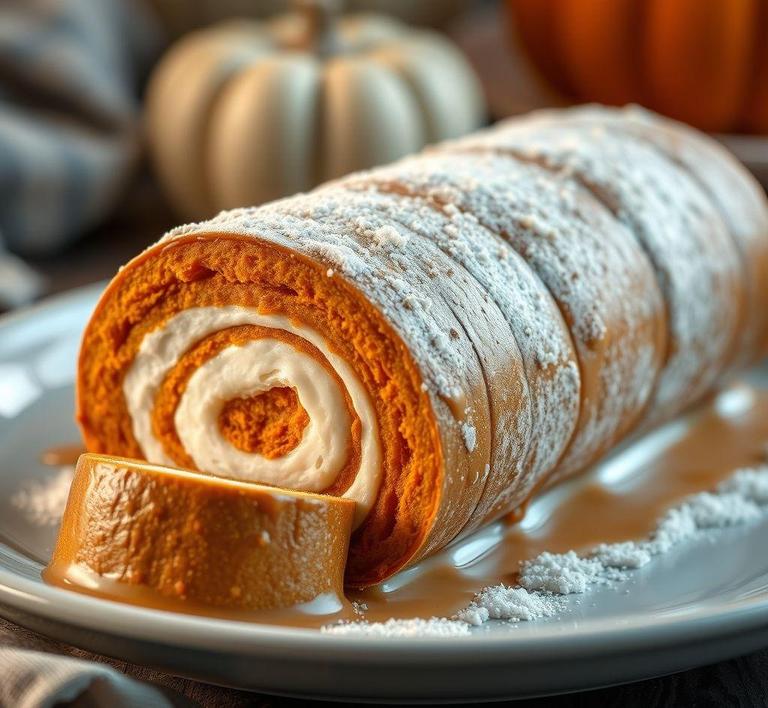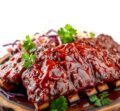If you’ve ever made a delicious pumpkin roll and ended up with leftovers, you might be wondering how to preserve it for later. Refreezing a pumpkin roll is an excellent way to enjoy it for weeks after baking. Whether you want to save it for a future holiday or just for a rainy day snack, refreezing ensures that the moist, spiced flavors stay intact. But there are a few tricks to get it just right, from proper wrapping techniques to the best storage methods. Let’s dive into how you can refreeze your pumpkin roll and enjoy that tasty treat long after the season is over!
Can You Refreeze Pumpkin Roll?

When it comes to baking or preserving delicious treats like pumpkin rolls, one of the most common questions that arises is whether you can refreeze them after they’ve been thawed. The answer is not as simple as yes or no, as it depends on several factors, including how the pumpkin roll was initially frozen, how it was thawed, and what kind of ingredients it contains.
Refreezing pumpkin roll is technically possible, but it’s important to be cautious. Pumpkin rolls are typically made with a soft, moist cake that’s filled with a creamy filling, often cream cheese-based. This combination of moist cake and delicate filling means that, while you can refreeze the roll, the process may alter the texture and quality of the dessert. The cake might become denser, and the filling could change in consistency, potentially separating or becoming watery.
In general, if the pumpkin roll has been properly stored and handled-frozen quickly after baking, then thawed correctly-it should be safe to refreeze, but some changes in texture are to be expected. This is especially true if the roll has been thawed at room temperature or in the microwave, which can sometimes lead to uneven moisture distribution within the cake, making refreezing a less desirable option.
How To Refreeze Pumpkin Roll?
Refreezing a pumpkin roll involves a few important steps to ensure that you’re preserving its quality as much as possible. Here’s a guide on how to do it correctly:
-
Cool The Roll Completely
Before freezing or refreezing a pumpkin roll, ensure that it has been completely cooled to room temperature. If you try to freeze it while still warm, the moisture trapped inside can cause ice crystals to form, leading to freezer burn or soggy spots upon thawing.
-
Wrap It Properly
After cooling, tightly wrap the pumpkin roll in plastic wrap or wax paper. Make sure the wrapping is airtight and free from any gaps, as exposure to air is the number one cause of freezer burn. After wrapping it in plastic, consider placing the pumpkin roll in a freezer-safe bag or wrapping it again in foil to offer double protection.
-
Label And Date It
Label the package with the date you’re freezing the roll. This will help you keep track of how long it’s been stored, as frozen pumpkin rolls are best consumed within 1-2 months for optimal taste and texture.
-
Freeze Quickly
Place the wrapped roll in the coldest part of your freezer. The faster the freezing process, the better the final result. Try not to store it near items that will fluctuate in temperature, as this can cause condensation that might compromise the quality of the roll.
-
Thaw Properly
When you’re ready to refreeze the pumpkin roll (after it has been thawed once), be sure to thaw it gently. Avoid thawing it in the microwave or leaving it out at room temperature for too long, as this could cause moisture imbalances or lead to the cream filling separating. The best way to thaw a pumpkin roll is in the refrigerator, where it can slowly reach a safe and consistent temperature.
Quality Impact
Refreezing a pumpkin roll can affect its quality in several ways. Here are the key aspects to consider:
-
Texture Of The Cake
The cake itself, which is often light and fluffy, may become slightly denser or more crumbly upon refreezing. This is especially true if the roll has been thawed and refrozen multiple times. The moisture content in the cake can affect its texture, leading it to feel drier or less soft compared to its original state.
-
Filling Consistency
The filling in a pumpkin roll, usually made with cream cheese or whipped cream, can be especially sensitive to freezing and refreezing. The cream cheese might separate from the other ingredients, or the filling could become watery once it’s thawed again. This can result in an unappealing texture, making it harder to enjoy the roll in its fully intended form. Additionally, freezing and thawing can cause the filling to lose its smoothness, giving it a grainy or curdled appearance.
-
Flavor
Freezing can dull some of the delicate flavors in a pumpkin roll. While pumpkin and spices like cinnamon, nutmeg, and cloves are relatively stable, the cream cheese filling might lose some of its tanginess or develop a slightly off flavor after being frozen and refrozen. If you have a sensitive palate, you might notice a slight difference, but it’s typically a subtle change that doesn’t completely ruin the treat.
-
Risk Of Freezer Burn
If the pumpkin roll isn’t wrapped well enough, freezer burn can set in. This occurs when the food is exposed to air and moisture during freezing, leading to dry patches or off-tasting sections. Freezer burn affects the texture and flavor, making it less appetizing. Proper wrapping and storage can help prevent this.
While you can technically refreeze a pumpkin roll, it’s not always the best choice if you’re hoping to preserve the dessert’s original quality. The texture and flavor of both the cake and the filling may be compromised after freezing, thawing, and refreezing, particularly in the case of delicate cream cheese fillings. However, if you’re in a pinch and the pumpkin roll is well-wrapped and properly stored, refreezing remains an option for preserving it until you’re ready to enjoy it again. Just remember, the sooner you consume it after refreezing, the better the quality will be. So, if you’re willing to accept some minor changes, refreezing your pumpkin roll can be a convenient way to extend its shelf life-but keep in mind that fresh is always the best.
Is It Safe To Refreeze Pumpkin Roll?
Refreezing a pumpkin roll is a subject that tends to spark mixed opinions. Pumpkin rolls, with their soft, spongy cake and creamy filling, are a popular dessert during the fall season. But the question of whether it’s safe to refreeze pumpkin roll largely depends on how it’s been handled before and after its initial freezing.
The Science Behind Freezing And Refreezing
Freezing food preserves it by slowing down the growth of bacteria and other microorganisms that cause spoilage. However, when food is thawed and then refrozen, the risk of bacterial growth increases. This is because freezing doesn’t kill bacteria, it merely halts its growth. When a pumpkin roll (or any other food) is thawed, the moisture within it is released, and the conditions become more favorable for bacteria to proliferate.
So, is it safe? Technically, yes. But there are some precautions to consider. If the pumpkin roll was initially frozen properly, handled hygienically, and kept at the right temperature during the thawing process, refreezing it could be fine. But each time you thaw and refreeze, you’re increasing the risk of texture degradation, loss of flavor, and potentially the growth of harmful microorganisms if it wasn’t handled correctly.
Signs That Pumpkin Roll Should Not Be Refrozen
While the safety of refreezing a pumpkin roll can hinge on a number of factors, there are clear signs that it should not be refrozen:
- Extended Thawing Time: If your pumpkin roll has been thawed for too long at room temperature (more than two hours), bacteria can begin to grow rapidly. In this case, refreezing it would not only compromise its quality but could also be dangerous.
- Excess Moisture or Soggy Texture: When pumpkin rolls are frozen and then thawed, they release moisture. If your roll becomes soggy or mushy after thawing, it’s a clear sign that the structure of the cake has already been compromised. Refreezing will likely make it even soggier, further diminishing both texture and flavor.
- Signs of Freezer Burn: If your pumpkin roll has been stored in the freezer for too long, or if it was improperly wrapped, you may notice white, dry patches on the surface. This is known as freezer burn, and it indicates that the food has lost moisture and could suffer from a tough, unappealing texture once refrozen.
- Unpleasant Smell: If the pumpkin roll emits a sour or off smell after thawing, it’s a clear sign that spoilage has occurred. Don’t risk refreezing it-discard it for safety’s sake.
Common Refreezing Mistakes
When attempting to refreeze a pumpkin roll, there are several common mistakes people often make that can lead to diminished quality and safety risks:
- Refreezing Without Proper Thawing: Sometimes, people will refreeze a pumpkin roll without allowing it to thaw completely first. This results in a dense, uneven texture once it’s thawed again, as well as inconsistent freezing and thawing cycles that can affect the safety of the food.
- Not Wrapping Properly: Wrapping is essential when freezing a pumpkin roll. If it’s not wrapped tightly in plastic wrap, foil, or stored in an airtight container, freezer burn is inevitable. This dry, discolored patch of surface damage leads to a poor texture and taste after refreezing.
- Refreezing Multiple Times: One of the biggest mistakes is refreezing a pumpkin roll over and over. Each cycle of freezing and thawing degrades the food’s texture and flavor significantly, and it can also cause foodborne pathogens to multiply. Always avoid multiple freeze-thaw cycles.
- Ignoring Storage Time Limits: Freezing doesn’t preserve food indefinitely. If you’ve had a pumpkin roll in the freezer for several months, it’s more likely to suffer from freezer burn or loss of flavor. Refreezing such a roll would only intensify these issues.
- Inconsistent Freezing Temperatures: If your freezer doesn’t maintain a consistent temperature or isn’t cold enough (below 0°F or -18°C), it can lead to partially thawed areas in your pumpkin roll, making refreezing an unsafe and unappealing process.
Tips And Tricks
To make sure that your pumpkin roll remains safe and enjoyable after refreezing, here are some tips and tricks to follow:
- Wrap It Well: The key to preserving the quality of your pumpkin roll during freezing and refreezing is making sure it’s wrapped properly. Use plastic wrap, then foil, or place the roll in an airtight container. This helps prevent freezer burn and moisture loss.
- Freeze as Quickly as Possible: To maintain the integrity of the cake and filling, freeze the pumpkin roll as quickly as possible after baking and cooling it. The faster it freezes, the less likely ice crystals are to form, which helps preserve its texture and moisture content.
- Thawing Techniques: When it’s time to thaw, do so in the refrigerator overnight rather than at room temperature. Thawing in the fridge will help preserve the texture of the pumpkin roll and minimize the risk of bacteria growth. Once thawed, consume within 1-2 days.
- Portion It Out: If you’re not sure if you’ll eat the whole pumpkin roll in one sitting, consider slicing it and freezing the slices individually. This allows you to only thaw what you need without having to refreeze the entire roll.
- Label and Date: Always label your pumpkin roll with the date it was frozen. This helps you keep track of how long it’s been in the freezer. Ideally, it should be consumed within 2-3 months for optimal flavor and texture.
- Check for Freezer Temperature: Ensure your freezer is set to the proper temperature. It should maintain a consistent 0°F (-18°C) or lower to prevent partial thawing, which can lead to the formation of ice crystals and degradation of the dessert.
Conclusion
While refreezing a pumpkin roll is not inherently unsafe, it requires careful handling to ensure that the dessert remains both safe and delicious. The process of freezing, thawing, and refreezing can alter the texture, flavor, and overall quality of the pumpkin roll, so it’s important to consider the signs of spoilage and handle the dessert with care. By following proper freezing techniques, avoiding common mistakes, and storing the roll at the right temperature, you can enjoy your pumpkin roll safely. But if you notice any signs of spoilage or have doubts about its safety, it’s better to err on the side of caution and not refreeze it. The best way to enjoy a pumpkin roll is fresh, or carefully frozen and enjoyed within a reasonable timeframe!


